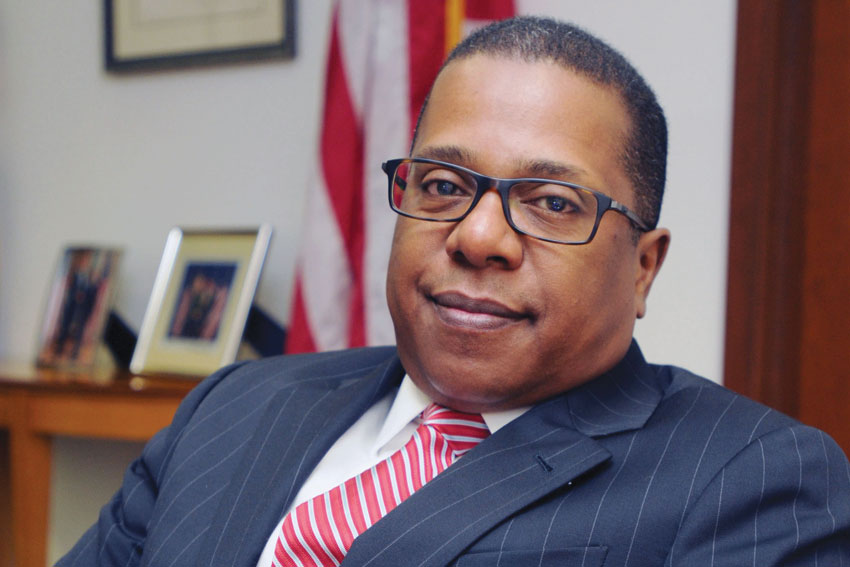The U.S.-Peru Trade Promotion Agreement, implemented in 2009, has seen two-way trade nearly double from $9 billion to $16 billion in 2014

The United States and Peru have enjoyed diplomatic relations since its independence from Spain in 1827, but trade relations have significantly strengthened since the countries entered into the US-Peru Trade Promotion Agreement in 2009, which saw two-way trade nearly double from $9 billion to $16 billion in 2014.
“I think the US-Peru FTA was a huge step forward in terms of setting the stage for increased investment in Peru, diversifying Peru’s product mix, increasing agricultural trade in particular,” said Brian Nichols, the United States Ambassador to Peru. “The FTA has strengthened the agricultural sector in both directions. Products like avocado, asparagus, blueberries, and grapes were not a significant part of the U.S. market before and have grown since the FTA.”
In the last three years U.S. exports to Peru have increased by 90% while imports from Peru are up by 52%. The United States is Peru’s second largest export market and primary supplier of imports. Peru was the United States’ 32nd largest goods export market in 2012, up from 36th in 2009.
Nichols also credits the FTA for stimulating interest in other sectors of the economy such as service and tourism.
“Last year we had 450,000 American tourists visit Peru. Many of those people came to see Peru’s great world class sites like Machu Picchu, and the fabulous restaurants and hotels.”
The increased interest in Peru has helped reduce poverty rates by half over the last twenty years, currently at 22.7%, while the country still faces many challenges in wealth distribution poverty rates continue to decline.
The economic partnership between the two countries has attracted investment interest from private U.S. companies looking to gain a foothold in Peru’s growing economy. American companies are playing a key role in developing Peru’s energy sector. Texas based Hunt Oil is a partner in the exploration of the Camisea gas fields. General Electric compressors are being used to move gas to pipelines serving the Fenix power plant in Chilca, partly built with U.S. funds, while the Luz del Sur, another U.S. Company, distributes gas and electricity to the Lima Metropolitan area.
“It provides Peruvians with some of the cheapest gas and electricity in the hemisphere,” said Nichols. “One of the key drivers for Peru’s economic growth and progress over the last decade has been
cheap energy.”
Investment opportunities in Peru are abundant and helping to spur and support U.S. business interests is AmCham, the American Chamber of Commerce in Peru, which has carried out more than a dozen trade missions to the United States even before the FTA with Peru was finalized.
“We are very active all across the country,” said Aldo R. Defilippi, Executive Director of the 47-year-old organization, made up of 5000 members from 580 companies, a third of which are from the United States, the rest from Peru and other foreign states. “AmCham has played an important role in helping to facilitate relationships between U.S. companies and Peruvian companies wanting to export. Peru has a wealth of natural resources, nearly 2000 miles of coastline, a robust manufacturing and energy industry and of course agriculture. AmCham is creating opportunities to help companies explore and maximize their mutual interests.”
One such example is Ferreycorp, a company that serves the mining, construction, and agriculture sectors through the import, distribution and sale of equipment and heavy machinery. It is one of Caterpillar’s largest dealers in Latin America.
“We are proud of that, and it encourages us to grow,” said Oscar Espinosa Bedoya, Executive President of Ferreycorp. “Our business activity is not oriented to market products in the U.S. but we are in the same line of most American products and we do it with dedication, because it defines us well in the market in which we operate.”
The U.S. and Peru continue to cooperate closely on economic matters most recently in negotiations on the Trans Pacific Partnership Agreement, a comprehensive trade agreement seeking to expand exports and stimulate job growth among 11 Pacific Rim nations.
The United States is also capitalizing on its collaborative relationship with Peru to combat the illegal wildlife trade and illegal mining. Both countries have worked closely to ensure that increased trade does not occur at the expense of the environment. Peru has made enormous strides in implementing institutional changes and legal and regulatory reforms to preserve the environment, including the creation of a Ministry of Environment. With the help of U.S. expertise it has trained members of Peru’s law enforcement and judiciary to more effectively handle environmental crimes.
“We have a strong partnership between the EPA and Peru’s counterpart in terms of looking at ways to deal with problems like illegal mining and logging,” said Nichols. “We are just now in the process of implementing an agreement on a trade transparency unit.”
The new program endorsed by the Department of Homeland Security would use computer programs to analyze and flag illicit trade flows between the two countries.
“If there is too much merchandise moving that is not justified by the analysis, you can find who is doing these illicit activities, whether it is gold, logging, or narcotics.”
The outlook for Peru remains positive. Its commitment to democracy and free speech distinguishes itself from other countries in the region and makes it a valuable partner in Latin America.
“When you look at the playing field here, there is tremendous confidence in Peru as a country where the fundamentals remain very strong,” said Nichols. “So despite the slower growth in the last year, and into this year, people do see Peru as a long term winning bet.”
0 COMMENTS